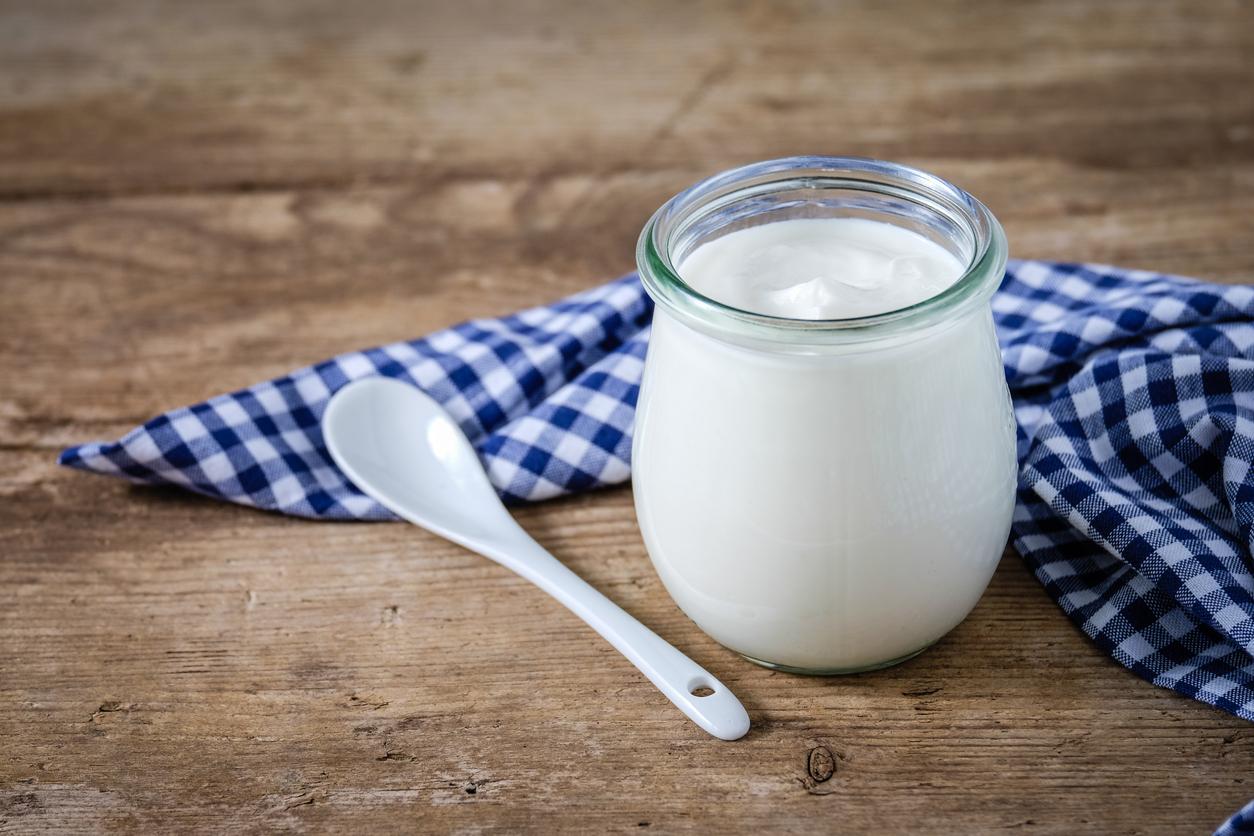
From sugar to fat and from weight loss to meal time
In the Netherlands we use about 350 grams of dairy per day. With 42 percent, milk is at the top of the list of popular dairy products, but yogurt is in second place with 15 percent. Cottage cheese has a share of 3 percent, but should certainly not be wiped out. Time to list and answer the 10 questions about yogurt and quark that are often asked to the editors of Health Net.
1. How much sugar is in cottage cheese and yogurt?
Cottage cheese and yogurt naturally contain some sugar: milk sugar (lactose). You will find this milk sugar (usually in a table) on the packaging with the amount of carbohydrates and sugars. Natural yogurt and quark naturally contain 3.5 to 5 grams of milk sugar per 100 ml. If more sugars are indicated on the label, then sugar has probably been added. This may be the case, for example, with fruit yogurt or curd cheese. If sugars have been added, you can also see this in the ingredient declaration. It is good to realize that there are many names for sugars. You can think of syrup, dextrose, maltose, malt sugar and, for example, glucose syrup.
2. Which is best: full, half full or lean?
Dairy contains fat, but usually not very much. Full-fat varieties start at 3 percent fat and the fat content in semi-skimmed varieties is around 1.5 percent in yogurt and 3.2 percent in cottage cheese. The fat percentage in lean variants is a maximum of 0.5 percent. In the Guidelines for a good diet, the Health Council does not state whether skimmed and semi-skimmed dairy are healthier than full-fat. The scientific basis is too limited to advise against full-fat dairy because of the high content of saturated fat. In fact, dairy seems to offer protection against the development of diabetes. The Dietary Guidelines for Diabetes of the Dutch Diabetes Federation (NDF) recommends limiting the consumption of saturated fat, but explicitly makes an exception for (full-fat) dairy products, including yogurt. Not all saturated fats appear to have the same effect on health. According to the NDF, several studies show that a high dairy intake lowers the risk of diabetes.
3. But do you prefer low-fat cottage cheese or yogurt if I want to lose some weight?
If you want to lose weight, low-fat yogurt and low-fat cottage cheese seem to be the best choice because they contain fewer calories. Still, full varieties may be a better choice for some. Full-fat dairy provides more and longer satiety, so that you don’t feel hungry again halfway through the morning after a breakfast with dairy. Together with fruit, some muesli, nuts or granola, full-fat dairy forms a long-satisfying breakfast. Watching calories, fat, unprocessed or carbohydrates… They are all possibilities. What works is for each individual.
4. Full-fat dairy contains a lot of saturated fat, right?
That’s right, two-thirds of the fat in dairy is saturated fat. But there is not much fat in dairy at all. 100 ml of full-fat yogurt contains a total of only 3 grams of fat, of which 2 grams are saturated fat. If you eat healthily and also use products with a lot of unsaturated fat such as oil, nuts, seeds and fish, you will probably end up with a healthy fat balance. Moreover, one saturated fat is not the same. It seems that saturated fat from dairy is healthier than the saturated fat from meat, for example. In addition, the adverse effects of saturated fat have recently been discussed. Many scientists still consider saturated fat to be unhealthy, but opinions are divided on this.
5. And what about the protein content in cottage cheese or yogurt?
In terms of protein content, cottage cheese takes the cake. Dairy is an important source of protein in the Netherlands. In 100 ml of semi-skimmed yogurt contains 4.2 g of protein, in the same amount of semi-skimmed cottage cheese it is 7.5 g. In the Netherlands we usually eat a portion of 150 ml, so that means more than 6 grams for yogurt and more than 10 grams for cottage cheese. The lean varieties contain slightly more protein than the full varieties. Protein contributes to the growth and recovery of your muscles. Protein also makes you feel full.
6. Which contains more calcium: cottage cheese or yogurt?
The difference is not big, but yogurt contains slightly more calcium than cottage cheese. By way of comparison: 100 ml of low-fat yogurt contains 152 mg of calcium, while in the same amount of low-fat cottage cheese it is 128 mg. Full-fat yogurt contains 143 mg per 100 ml, full-fat cottage cheese contains 125 mg of calcium per 100 ml.
7. Are there vitamins B2 and B12 in yogurt and cottage cheese?
Cottage cheese and yogurt indeed provide important nutrients such as B2 (for energy metabolism) and B12 (necessary for the production of red blood cells). Vitamin B12 is a vitamin that is only found in animal products and is therefore also found in dairy.
8. Is standing yogurt better for my health than stirred yogurt?
No, it does not matter for your health whether you take stir or stand yogurt. You notice the difference especially when you open a cup: standing yogurt is firmer and resembles cottage cheese. Stirred yogurt is more liquid. Yogurt in a carton is therefore always ‘stir’.
When making regular yoghurt, a higher temperature is used and lactic acid bacteria have less chance to convert lactose into lactic acid. Stand yogurt also ripens in the packaging.
9. Is Greek yogurt healthier than regular full-fat yogurt?
Not according to the Nutrition Center. At least, if you look at regular full-fat Greek yogurt. Cream has been added to that. And you can taste it! But, you can also see it in the fat content: that is 10 percent. Greek yogurt therefore does not fit in the Wheel of Five. Incidentally, there are also variants that contain little to no fat. They are often called ‘Yogurt Greek style’ and usually the amount of fat is already stated on the package. There are variants with 0%, 2% and 5% fat. According to the Nutrition Center, if the fat percentage is below 1.1 percent, yogurt only fits in the Wheel of Five. Nice to know: Greek yogurt is an example of standing yogurt.
10. Does it matter if I eat cottage cheese or yogurt with my breakfast or lunch?
No, in principle not. Just take it when you feel like it. Dairy products such as cottage cheese and yogurt are an important part of a healthy diet. For dairy products, the average recommended amount is 2 to 3 servings (300 to 450 ml) per person per day.
Sources:
- Guidelines for a good diet from the Health Council
- NEVO table of the RIVM
- Nutrition center
- Dutch Diabetes Federation, Dietary Guidelines for Diabetes 2015
- News for Dietitians














